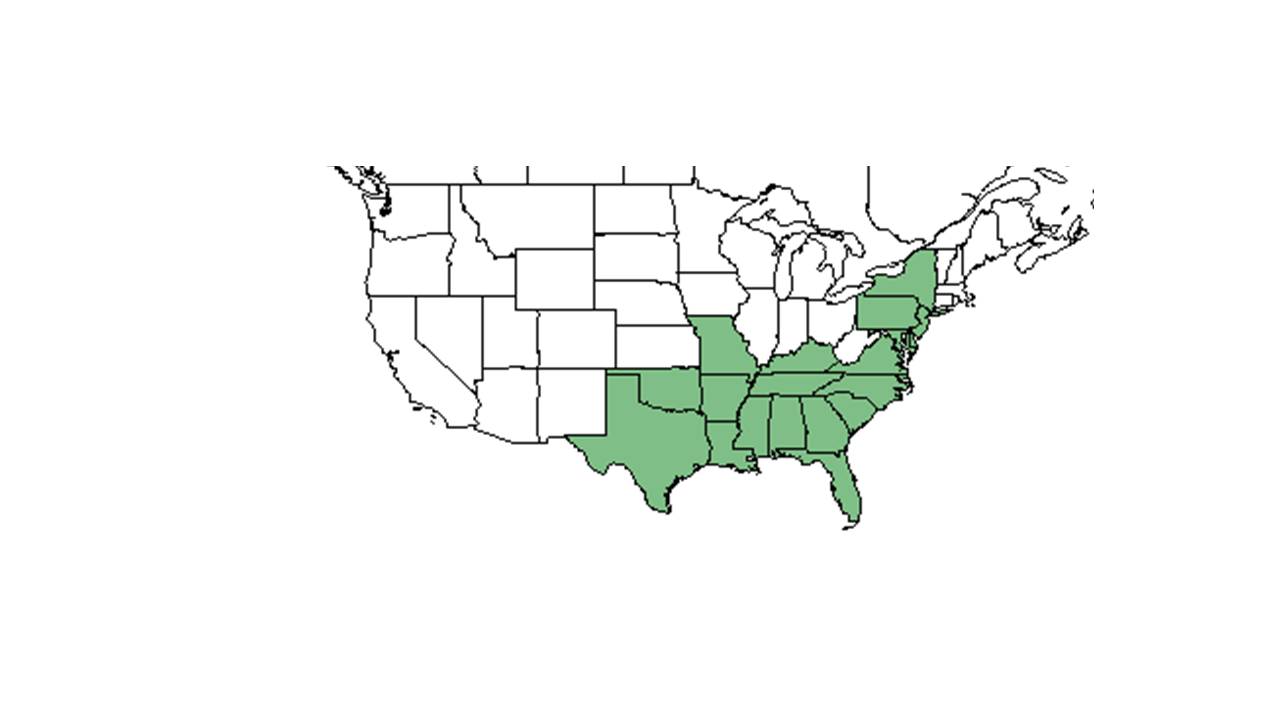Difference between revisions of "Cyperus plukenetii"
| Line 22: | Line 22: | ||
==Ecology== | ==Ecology== | ||
===Habitat=== <!--Natural communities, human disturbed habitats, topography, hydrology, soils, light, fire regime requirements for removal of competition, etc.--> | ===Habitat=== <!--Natural communities, human disturbed habitats, topography, hydrology, soils, light, fire regime requirements for removal of competition, etc.--> | ||
| + | It requires sandy soils.<ref name="Carter et al 1993"/> It is found in sparse scrub woods, woods' edges, and open fields.<ref>CARTER, R. 1984. A systematic study of the New World species of section Umbellati of Cyperus. Unpubl. Ph.D. Thesis, Vanderbilt University, Nashville, Tenn. 279 p. Carter, R. (1993). "Animal dispersal of the North American Sedge, Cyperus plukenetii (Cyperaceae)." American Midland Naturalist 129: 352-356.</ref> | ||
===Phenology=== <!--Timing off flowering, fruiting, seed dispersal, and environmental triggers. Cite PanFlora website if appropriate: http://www.gilnelson.com/PanFlora/ --> | ===Phenology=== <!--Timing off flowering, fruiting, seed dispersal, and environmental triggers. Cite PanFlora website if appropriate: http://www.gilnelson.com/PanFlora/ --> | ||
===Seed dispersal=== | ===Seed dispersal=== | ||
| + | It can be dispersed in a variety of ways: rain wash, transport of achenes in mud on feet of migratory waterfowl<ref name="Ridley 1930 cited by Carter et al 1993">RIDLEY, H. N. 1930. The dispersal of plants throughout the world. L. Reeve & Co., Ltd., Ashford, Kent. 744 p. Carter, R. (1993). "Animal dispersal of the North American Sedge, Cyperus plukenetii (Cyperaceae)." American Midland Naturalist 129: 352-356.</ref>, ingestion of fruits by migratory waterfowl<ref>RIDLEY, H. N. 1930. The dispersal of plants throughout the world. L. Reeve & Co., Ltd., Ashford, Kent. 744 p. BEND, G. 1937. Eigenartige verbreitung-seinrichtungen bei der Cyperaceen gattung Gahnia. Flora, 131:369-386. Carter, R. (1993). "Animal dispersal of the North American Sedge, Cyperus plukenetii (Cyperaceae)." American Midland Naturalist 129: 352-356.</ref>, and flotation of achenes (Chermezon 1924; Ridley 1930; Lye 1981)<ref>CHERMEZON, H. 1924. Sur la dissemination de quelques Cyperacees. Bull. Soc. Bot. France, 71:849- 861. RIDLEY, H. N. 1930. The dispersal of plants throughout the world. L. Reeve & Co., Ltd., Ashford, Kent. 744 p. LYE, K. A. 1981. Studies in African Cyperaceae 19. The genera of Anosporum Nees and Sorostachys Steudel. Nord. J. Bot., 1:186-191.</ref>It also uses animals as dispersal agents by attaching to their fur by spikelets<ref name="Carter et al 1993">Carter, R. (1993). "Animal dispersal of the North American Sedge, Cyperus plukenetii (Cyperaceae)." American Midland Naturalist 129: 352-356.</ref> | ||
===Seed bank and germination=== | ===Seed bank and germination=== | ||
===Fire ecology=== <!--Fire tolerance, fire dependence, adaptive fire responses--> | ===Fire ecology=== <!--Fire tolerance, fire dependence, adaptive fire responses--> | ||
| Line 31: | Line 33: | ||
==Conservation and Management== | ==Conservation and Management== | ||
==Cultivation and restoration== | ==Cultivation and restoration== | ||
| + | ==Photo Gallery== | ||
==References and notes== | ==References and notes== | ||
| − | |||
Revision as of 18:00, 10 June 2015
| Cyperus plukenetii | |
|---|---|
Error creating thumbnail: Unable to save thumbnail to destination
| |
| Scientific classification | |
| Kingdom: | Plantae |
| Division: | Magnoliophyta - Flowering plants |
| Class: | Liliopsida – Monocotyledons |
| Order: | Cyperales |
| Family: | Cyperaceae |
| Genus: | Cyperus |
| Species: | C. plukenetii |
| Binomial name | |
| Cyperus plukenetii Fernald | |

| |
| Natural range of Cyperus plukenetii from USDA NRCS Plants Database. | |
Contents
Description
Distribution
Ecology
Habitat
It requires sandy soils.[1] It is found in sparse scrub woods, woods' edges, and open fields.[2]
Phenology
Seed dispersal
It can be dispersed in a variety of ways: rain wash, transport of achenes in mud on feet of migratory waterfowl[3], ingestion of fruits by migratory waterfowl[4], and flotation of achenes (Chermezon 1924; Ridley 1930; Lye 1981)[5]It also uses animals as dispersal agents by attaching to their fur by spikelets[1]
Seed bank and germination
Fire ecology
Pollination
Use by animals
Diseases and parasites
Conservation and Management
Cultivation and restoration
Photo Gallery
References and notes
- ↑ 1.0 1.1 Carter, R. (1993). "Animal dispersal of the North American Sedge, Cyperus plukenetii (Cyperaceae)." American Midland Naturalist 129: 352-356.
- ↑ CARTER, R. 1984. A systematic study of the New World species of section Umbellati of Cyperus. Unpubl. Ph.D. Thesis, Vanderbilt University, Nashville, Tenn. 279 p. Carter, R. (1993). "Animal dispersal of the North American Sedge, Cyperus plukenetii (Cyperaceae)." American Midland Naturalist 129: 352-356.
- ↑ RIDLEY, H. N. 1930. The dispersal of plants throughout the world. L. Reeve & Co., Ltd., Ashford, Kent. 744 p. Carter, R. (1993). "Animal dispersal of the North American Sedge, Cyperus plukenetii (Cyperaceae)." American Midland Naturalist 129: 352-356.
- ↑ RIDLEY, H. N. 1930. The dispersal of plants throughout the world. L. Reeve & Co., Ltd., Ashford, Kent. 744 p. BEND, G. 1937. Eigenartige verbreitung-seinrichtungen bei der Cyperaceen gattung Gahnia. Flora, 131:369-386. Carter, R. (1993). "Animal dispersal of the North American Sedge, Cyperus plukenetii (Cyperaceae)." American Midland Naturalist 129: 352-356.
- ↑ CHERMEZON, H. 1924. Sur la dissemination de quelques Cyperacees. Bull. Soc. Bot. France, 71:849- 861. RIDLEY, H. N. 1930. The dispersal of plants throughout the world. L. Reeve & Co., Ltd., Ashford, Kent. 744 p. LYE, K. A. 1981. Studies in African Cyperaceae 19. The genera of Anosporum Nees and Sorostachys Steudel. Nord. J. Bot., 1:186-191.